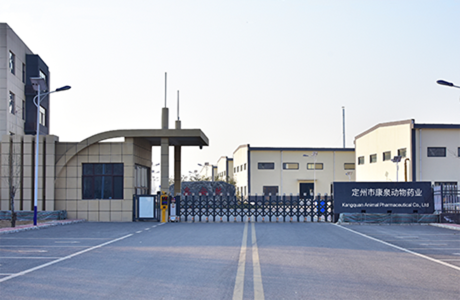- Afrikaans
- Albanian
- Amharic
- Arabic
- Armenian
- Azerbaijani
- Basque
- Belarusian
- Bengali
- Bosnian
- Bulgarian
- Catalan
- Cebuano
- Corsican
- Croatian
- Czech
- Danish
- Dutch
- English
- Esperanto
- Estonian
- Finnish
- French
- Frisian
- Galician
- Georgian
- German
- Greek
- Gujarati
- Haitian Creole
- hausa
- hawaiian
- Hebrew
- Hindi
- Miao
- Hungarian
- Icelandic
- igbo
- Indonesian
- irish
- Italian
- Japanese
- Javanese
- Kannada
- kazakh
- Khmer
- Rwandese
- Korean
- Kurdish
- Kyrgyz
- Lao
- Latin
- Latvian
- Lithuanian
- Luxembourgish
- Macedonian
- Malgashi
- Malay
- Malayalam
- Maltese
- Maori
- Marathi
- Mongolian
- Myanmar
- Nepali
- Norwegian
- Norwegian
- Occitan
- Pashto
- Persian
- Polish
- Portuguese
- Punjabi
- Romanian
- Russian
- Samoan
- Scottish Gaelic
- Serbian
- Sesotho
- Shona
- Sindhi
- Sinhala
- Slovak
- Slovenian
- Somali
- Spanish
- Sundanese
- Swahili
- Swedish
- Tagalog
- Tajik
- Tamil
- Tatar
- Telugu
- Thai
- Turkish
- Turkmen
- Ukrainian
- Urdu
- Uighur
- Uzbek
- Vietnamese
- Welsh
- Bantu
- Yiddish
- Yoruba
- Zulu
Dec . 05, 2024 11:11 Back to list
Tylosin Dosage Recommendations for Cattle Health and Treatment Guidelines
Tylosin Dose in Cattle Understanding Its Use and Importance
Tylosin is a macrolide antibiotic that plays a significant role in veterinary medicine, particularly in the treatment and prevention of various bacterial infections in cattle. Originally developed as a feed additive, tylosin has gained attention for its effectiveness against pathogens that adversely affect growth and health in bovine populations. Understanding the appropriate dosage and application of tylosin can significantly impact cattle management practices and productivity.
The Role of Tylosin in Cattle Farming
In the cattle industry, maintaining animal health is crucial not only for the well-being of the animals but also for economic viability. Tylosin is often used to control infections caused by organisms such as *Mycoplasma* and certain species of *Clostridium*. It is also commonly employed as a preventative measure in young cattle to reduce the incidence of respiratory diseases, which can be particularly harmful during weaning and transport.
Tylosin's mechanism of action involves inhibiting bacterial protein synthesis, which effectively stops bacterial growth and infection spread. This makes it a valuable tool in maintaining cattle health, improving feed efficiency, and enhancing overall weight gain.
Recommended Dosage
The dosage of tylosin in cattle can vary depending on the specific condition being treated and the form of tylosin being administered. Generally, the recommended dose of tylosin is approximately 10 to 20 mg per kilogram of body weight when used for therapeutic purposes. However, when used as a growth promoter or in feed formulations, the dosage might differ.
For instance, in cases of respiratory infections, a higher initial dose may be preferred, followed by a maintenance dose over a specified period. It’s essential to consult a veterinarian for appropriate dosing tailored to the individual animal's health status and weight to avoid under-dosing, which could lead to treatment failure, or over-dosing, which could result in toxicity or adverse effects.
tylosin dose in cattle

Administration Forms
Tylosin is available in several forms injectable, oral formulations, and as a feed additive. The method of administration may influence the dosage and frequency of treatment. Injectable forms allow for precise dosing and quicker therapeutic effects, particularly in acute cases. In contrast, oral forms are often utilized for long-term treatment regimens or in herd management.
Feed additives containing tylosin are commonly used to promote growth in healthy animals, as they can improve feed conversion ratios. The incorporation of tylosin into animal feed must comply with regional regulations regarding its use, as well as withdrawal periods that ensure no residuals are present in meat or milk products.
Safety and Withdrawal Times
When using tylosin, it is crucial for cattle producers to adhere to established withdrawal periods before slaughter to prevent residues in meat. The withdrawal time for tylosin can vary, but it is generally recommended to observe a withdrawal period of at least 30 days for cattle before slaughter or milk production. Adhering to these guidelines is essential not only for consumer safety but also for compliance with food safety regulations.
Conclusion
Tylosin remains a vital antibiotic in cattle farming, providing significant benefits in managing bacterial infections and promoting growth. However, responsible use is key to preventing antimicrobial resistance and ensuring animal health. By understanding the appropriate dosing and administration methods, cattle producers can effectively utilize tylosin while minimizing risks.
Farmers and veterinarians should work closely together to establish treatment protocols that consider the health needs of the cattle, local regulations, and best practices for antibiotic stewardship. As research continues into the effectiveness and safety of tylosin in cattle, it is essential to stay informed about regulatory changes and advancements in veterinary pharmaceuticals to optimize cattle health and production outcomes.
-
Guide to Oxytetracycline Injection
NewsMar.27,2025
-
Guide to Colistin Sulphate
NewsMar.27,2025
-
Gentamicin Sulfate: Uses, Price, And Key Information
NewsMar.27,2025
-
Enrofloxacin Injection: Uses, Price, And Supplier Information
NewsMar.27,2025
-
Dexamethasone Sodium Phosphate Injection: Uses, Price, And Key Information
NewsMar.27,2025
-
Albendazole Tablet: Uses, Dosage, Cost, And Key Information
NewsMar.27,2025













